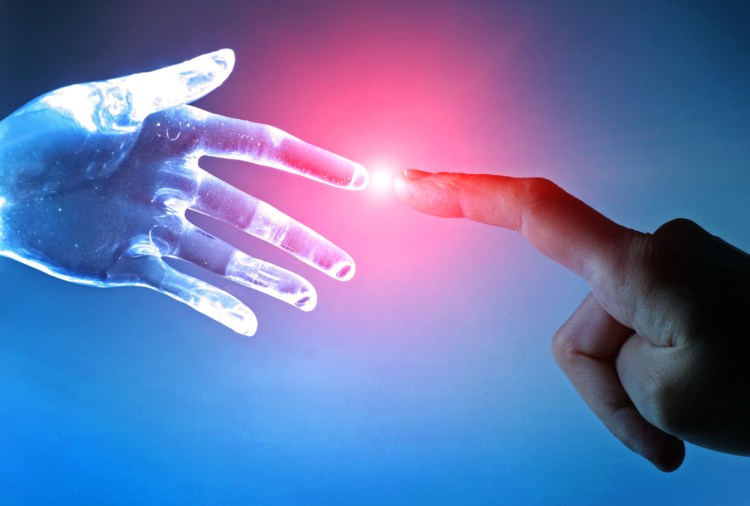What an unexpected twist in the tale of bots.
A McKinsey write-up says the bots are stumbling. Google’s Igor Markov warns that AI could turn into the plague. Yet some of the world’s largest companies have recruited tens of thousands of workers to build AI and chatbots. There’s this supposed coming wave of disintermediation where conventional interactions that would otherwise call upon humans will now simply be replaced with bot automation that will allegedly kill millions of jobs.
But don’t count out the humans just yet, folks. We are anything but homeostatic beings, and we’re not about to let bits and bytes eat our lunch. The pendulum has swung far towards chatbots and automation, and I’m here to tell you it is going to swing back towards human.
Bots are not people
Let’s get something straight: There are undoubtedly situations where programmatic, homogenized bots make perfect sense, such as in binary, redundant, or commoditized transactions. But I stand firmly on the thesis that there will never be a replacement for qualitative dialogue between two human beings.
June 5th: The AI Audit in NYC
Join us next week in NYC to engage with top executive leaders, delving into strategies for auditing AI models to ensure fairness, optimal performance, and ethical compliance across diverse organizations. Secure your attendance for this exclusive invite-only event.
To understand the difference, it helps to become a student of phenomenology: the study of our human experience. The phenomenological viewpoint is that AI and chatbots are all based on thin data with no understanding or empathy to support their outputs, whereas humans consist of thick data comprised of tacit and experiential knowledge (environmental idiosyncrasies) that make our uniqueness highly unpredictable, yet surprisingly and sustainably meaningful. Simply put, humans are kind of weird, and that’s really, really difficult to reproduce in a Turing test. Even the brilliant futurist Ray Kurzweil pushed back his “Turing test-capable computers’ prognostication by a decade, and I bet he’ll push it back again the closer we get to that date.
In the late 1990s and early 2000s I had the privilege of a front-row seat while working on the first major wave of self-service, touchscreen kiosk systems. Like bots today, there were questions back then whether self check-in and checkout terminals would displace humans. I mean, kiosks are almost never sick and don’t complain about the size of their paycheck, right?
As a modern shopper, you know that self-checkout lines didn’t kill off humans. Sometimes we use automation for simple commodity transactions, but in many situations there remains an instinctive desire for real human contact at checkout lines because people still like being helped by people, especially in more complex or arduous transactional scenarios. There is just something innately human about humans.
I believe that people will continue to buy from people they know and trust, and that bots are not people. Actually, bots are already transforming us by making people more competitive. In response to the bot trend, humans will increasingly do a better job of being accessible and communicating in new ways with today’s digital constituents (that is, prospects and customers).
Humans are more than just a hedge bet against bots, but will evolve into characters in a new form of conversational commerce built on the notion that customers prefer curated, transparent, and authentic digital interactions. And people becoming more competitive is a good thing. The better humans can compete against bots, the longer they’ll stand to preserve the great cultural traditions of intercommunicative commerce that pre-date computers.
Only humans have empathy
The human phenomenon is something Apple clearly understands. This month Apple announced their new Business Chat program that enables conversational commerce within the Apple platform. Interestingly, unlike their competitors who are infatuated with chatbots, this first iteration Apple released isn’t based on chatbots, but rather will act as a communication platform for companies to have real conversations with customers, human-to-human.
Apple, despite its walled garden ecosystem, is a visionary company, and I believe it understands and correctly anticipates that the primary role technology should play is still rooted in facilitating human connectedness. Chatbots are easy — helping us preserve our humanity is hard.
While fully engineered and deployed by humans, bots will never be people. Bots can and do have a place in the transactional world, but purely from an augmentation standpoint. Bots lack people skills, chemistry, compassion. These salient human qualities cannot be programmed into a bot. There is tremendous value in humans that we need to recognize and honor. So to say that “bots can do what people do” fails to account for the uniqueness and amazing capabilities of the species.
To distill the differentiation of humans and bots to the most fundamental of characteristics:
Bots imitate and are insensitive. Humans innovate and are empathic.
I challenge you to be a conscientious observer and question your bot communications. A reasonable question is, “How do bots detract from my meaningful human experiences?” Examine at what cost inorganic interactions displace real people full of incredible tacit and experiential knowledge. You vote with your wallet, and so if you believe in the power of human, choose to do business with companies that hire, employ, and empower real people. It’s about transparency. It’s about being real.
Lief Larson is a software engineer and researcher in human-machine dynamics and is the cofounder of Seattle-based Engage, a company that provides human-powered chat.


